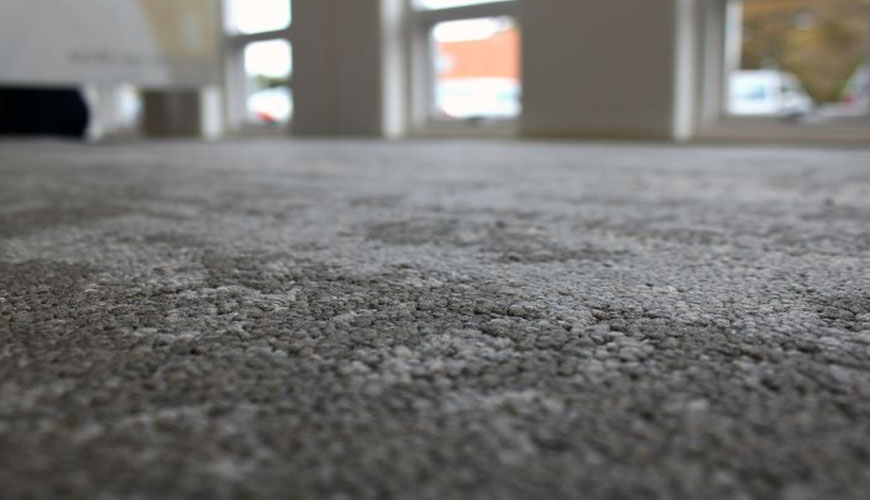

The “ISO 11857 Textile floor coverings - Determination of resistance to delamination” standard developed by the International Organization for Standardization (ISO) describes a test method for determining the force required to separate the layers of textile floor coverings. This test method can be applied to any secondary or foam-reinforced textile floor covering. The results obtained with this method are useful for the control of production, but cannot be considered a reliable indicator of usage performance.

For the purposes of this international standard, delamination force refers to the force required to separate the component layers of a textile floor covering, measured at a width of 50 mm and expressed in Newtons.
Textile floor coverings are textile products designed to be used on floor surfaces. These include rugs and related materials that are secured to the floor with staples, tacks, or adhesive, as well as removable area rugs.
There are many standards for textile floor coverings published by international standards organizations such as ISO and ASTM. These standards cover a wide range of tests used in the construction of textile floor coverings, whether handmade or machine made.
Some standards are very specific, outlining the number of tufts or loops per unit length and area in a carpet, while others address the thickness of the products, including the pile or visible fibers of the carpet above the substrate. Some standards define and illustrate specific weaving, knitting and tufting techniques and outline the types of knots used in hand-woven carpets.
The resistance to delamination (delamination resistance) of the installed product fully bonded to a substrate is determined by placing the test specimen attached between a rigid plate and a fixed rigid substrate in a tensile testing machine and pulling it at a certain speed. The maximum recorded force, corresponding to the adhesion force of the test sample divided by the cross-sectional area of the test sample, gives the delamination strength.
The tensile testing machine used in these tests must have an appropriate capacity and comply with the EN ISO 527-1 standard and have a constant test speed of 10 plus/minus 1 mm/min. This device allows force to be measured with an accuracy of plus/minus 1 percent. The test specimen is the assembled part with a diameter of 100 plus/minus 1mm including its hard substrate. After the product has cured, a steel plate is attached to the test sample. Hot or cold adhesives used must not strengthen or otherwise affect the properties of the test sample. The solvent used must be compatible with the test sample. Additionally, the adhesive used should not be the weakest part of the test sample. Test samples are cured at 23 degrees plus/minus 2 degrees and 50 percent plus/minus 5 relative humidity for at least the time specified by the applicant. After the rigid plate is bonded to the test sample, the entirety is conditioned at 16 degrees plus/minus 23 degrees and 2 plus/minus 50 percent relative humidity for a period of at least 5 hours to allow for adequate strength of the adhesive used.
To determine the resistance of the partially bonded product to delamination, the average value calculated from the test results is expressed according to the percentage of bonding of the partially bonded product to the substrate, in accordance with the design rules of the manufacturer.
The test report mainly contains the following information: name of the test laboratory, test date, dimensions, description of the installed product including curing and conditioning, substrate description (used for classification), test conditions, all individual tensile strengths and rounded to the nearest 1 kPa arithmetic mean value, description of failure modes in the test sample/substrate combination, and any operational details not mentioned in this report, as well as events likely to affect the results.
Among the numerous testing, measurement, analysis and evaluation studies it provides for businesses in various sectors, our organization also provides testing services in accordance with the "ISO 11857 Textile floor coverings - Determination of resistance to delamination" standard, with a trained and expert staff and advanced technological equipment.
To get an appointment, to get more detailed information or to request an evaluation, you can ask us to fill in our form and reach you.